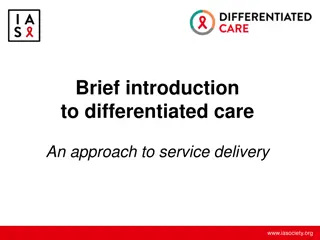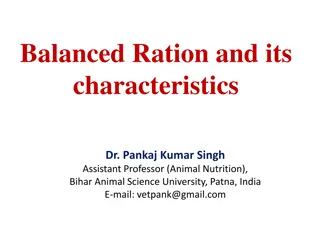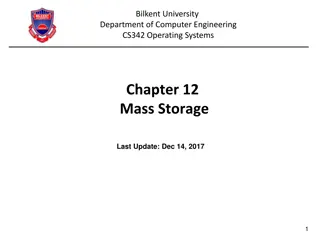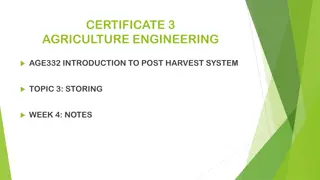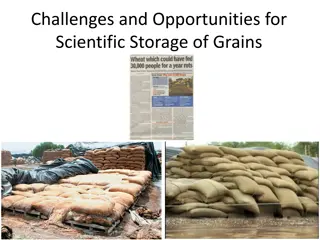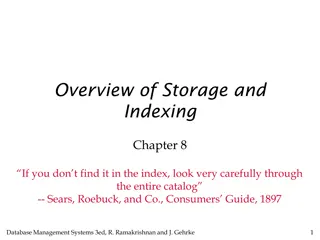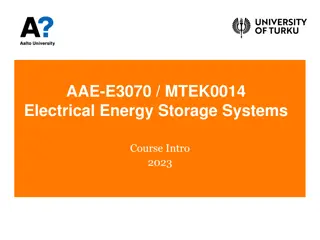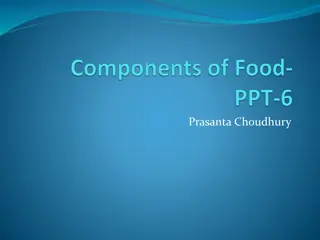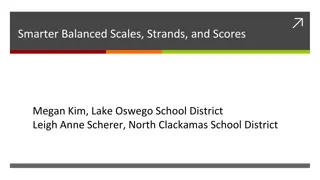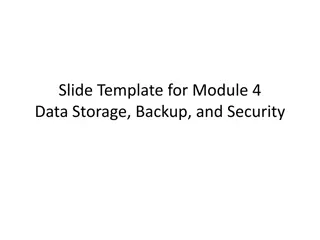Balanced I/O Performance Through Differentiated Key-Value Storage Management
Real-world workloads are diverse, requiring key-value storage systems to efficiently handle varying value sizes and types of operations. This paper introduces DiffKV, a system that optimizes I/O performance by managing keys and values with different ordering strategies, fine-grained separation, and merge optimization techniques, catering to small, medium, and large KV pairs in mixed workloads. Implementation and evaluation details atop PingCAP Titan are provided.
Download Presentation

Please find below an Image/Link to download the presentation.
The content on the website is provided AS IS for your information and personal use only. It may not be sold, licensed, or shared on other websites without obtaining consent from the author. Download presentation by click this link. If you encounter any issues during the download, it is possible that the publisher has removed the file from their server.
E N D
Presentation Transcript
Differentiated Key-Value Storage Management for Balanced I/O Performance Yongkun Li1, Zhen Liu1, Patrick P. C. Lee2, Jiayu Wu1, Yinlong Xu1,3 Yi Wu4, Liu Tang4, Qi Liu4, Qiu Cui4 1University of Science and Technology of China 2The Chinese University of Hong Kong 3Anhui Province Key Laboratory of High Performance Computing, USTC 4PingCAP USENIX ATC 2021 1
Background Real-world workloads are diverse and mixed Value size varies in a large range Writes, reads, and scans are common Log-structured merge (LSM) tree Transform random writes into sequential writes Support efficient reads and range scans Limitation: high write amplifications 2
LSM-tree: Basics Store keys and values together Keys and values are fully sorted in each level Compaction across levels high I/O amplifications Immutable MemTable MemTable Memory Disk L0 L1 Ln SSTable Sorted Group 3
Relaxing Fully-Sorted Ordering Each level is not necessarily fully sorted by keys e.g., PebblesDB [SOSP 17], Dostoevsky [SIGMOD 18], etc. Support efficient writes, but sacrifice reads and scans Immutable MemTable MemTable Memory Disk L0 L1 Fragmented LSM- tree in PebblesDB .. Ln SSTable Sorted Group Guard 4
KV Separation Store keys and values separately e.g., WiscKey, HashKV, Titan, Bourbon, etc. Support efficient writes and reads, but have poor scan performance Immutable MemTable MemTable Memory KV separation <key,v_loc> Disk values L0 L1 WiscKey Append- only log Ln SSTable Sorted Group 5
Trade-off Analysis Are the optimizations suitable for all conditions? Relax fully-sorted ordering Efficient in small-to-medium values KV separation Suitable for large values Trade-offs between reads/writes and scans 6
Our Contributions DiffKV, a KV store realizing balanced I/O performance via differentiated KV management Coordinate differentiated management of ordering for keys and values Manage values with partially-sorted ordering Merge optimization techniques Fine-grained KV separation Differentiate small, medium, and large KV pairs for mixed workloads Implementation atop PingCAP Titan[*] and extensive evaluation 7 [*] https://github.com/tikv/titan
Differentiated KV Management Decouple keys and values during flushing vTree: a multiple-level tree; each level has multiple sorted groups Each sorted group is a collection of vTables Values in a level are not fully sorted and have overlapped key ranges <Key, Value> <Value> <key> Manage the order of values! MemTable Memory Disk Partially sorted in each level Li vLi vTable SSTable SSTable vTable 8
Differentiated KV Management Compaction-triggered merge Involve values whose keys participate in compaction Be triggered when compaction happens in LSM-tree Reorganize all compaction-related values in one level, and then append them to next level Overhead of updating LSM- tree can be hidden! 9
O1: Lazy Merge Problem: frequent merge operations Each compaction triggers a merge operation Idea: Values are delayed to merge until the target level is one of the last two levels Lazy merge significantly reduces number of merge operations 10
O2: Scan-optimized Merge Problem: too many sorted groups within one level Apply append-only merge policy Idea: Detect number of overlapping vTables after normal merge Add a tag to indicate participation in the next merge Carefully adjust the degree of ordering for values in vTree 11
Fine-grained KV Separation KV separation is advantageous for large KV pairs, but has marginal benefits for small KV pairs Selective approach: Small values: stored entirely in LSM-tree Medium values: stored in vTree Large values: stored in vLogs Hotness-awareness Hot-cold separation scheme Greedy garbage collection 12
Experiments Testbed backed with a Samsung 860 EVO 480 GB SSD KV stores RocksDB, PebblesDB, Titan (no GC, background GC, foreground GC) DiffKV: built on Titan to reuse KV separation Workloads Key size: 24 bytes Value size: average 1KB (follow Pareto distribution) (i) insert 10 GB KV pairs (ii) update 300 GB KV pairs (iii) read 10 GB KV pairs (iv) scan 10 GB KV pairs 13
Microbenchmarks of DiffKV Throughput Average latency Space usage Compared to RocksDB and PebblesDB 2.7-3.8x inserts; 2.3-3.7x updates; 2.6-3.4x reads Comparable scan performance Compared to Titan 3.2x scans; up to 1.7x updates; 43.2% lower scan latency DiffKV has acceptable space usage 14
Impact of Merge Optimizations Value GC/merge overhead Key compaction overhead Coordinated merge design Reduce 60.7% of time cost of value management Slightly increase key compaction overhead 15
Conclusions DiffKV: differentiated key-value storage management for balanced I/O performance More evaluation results and analysis in paper Source code: https://github.com/ustcadsl/diffkv 16
Thanks for our attention! For any questions, please feel free to contact Prof. Yongkun Li@USTC ykli@ustc.edu.cn http://staff.ustc.edu.cn/~ykli/ 17







